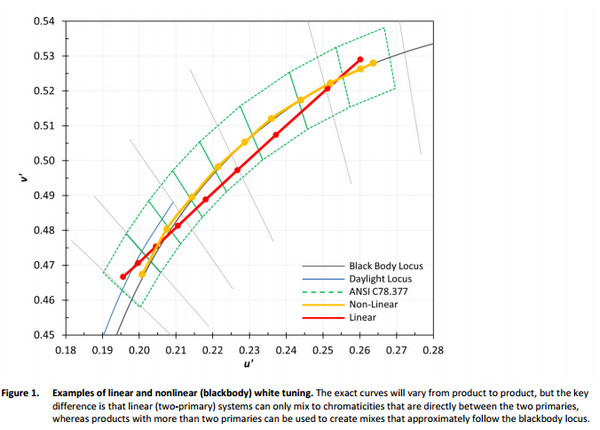The U.S. Department of Energy's CALiPER program has released Report 23: Photometric Testing of White-Tunable LED Luminaires, which is the first in a planned series of investigations on color-tunable LED luminaires. The main goal of the new study was to understand the amount of testing required to characterize a white-tunable LED lighting product. In this case, determining a sufficient protocol required more extensive testing than would be feasible for widespread use. Eight white-tunable luminaires were tested at dozens of points covering the range of color tuning (CCT) and dimming (luminous intensity).
 |
|
(Image courtesy of DOE) |
The report focuses on the full-intensity measurements, which were typically at 11 color set points covering a range of CCTs, and reveals substantial variation in input power, lumen output, efficacy, and Duv over the color-tuning range for many of the products, which would not be captured with only a few test points. The results show that future test procedures will likely require at least five to seven measurement points to provide a reasonable characterization. The increase in testing burden on manufacturers could potentially be mitigated by specifying a relatively brief measurement stabilization process between readings at different settings, rather than requiring a lengthy warmup period between readings.
The report raises a number of questions about existing test methodology and its application to this category of products, which will require further discussion and consideration in the near future. For a closer look at the findings, download the full report from the DOE SSL website.












